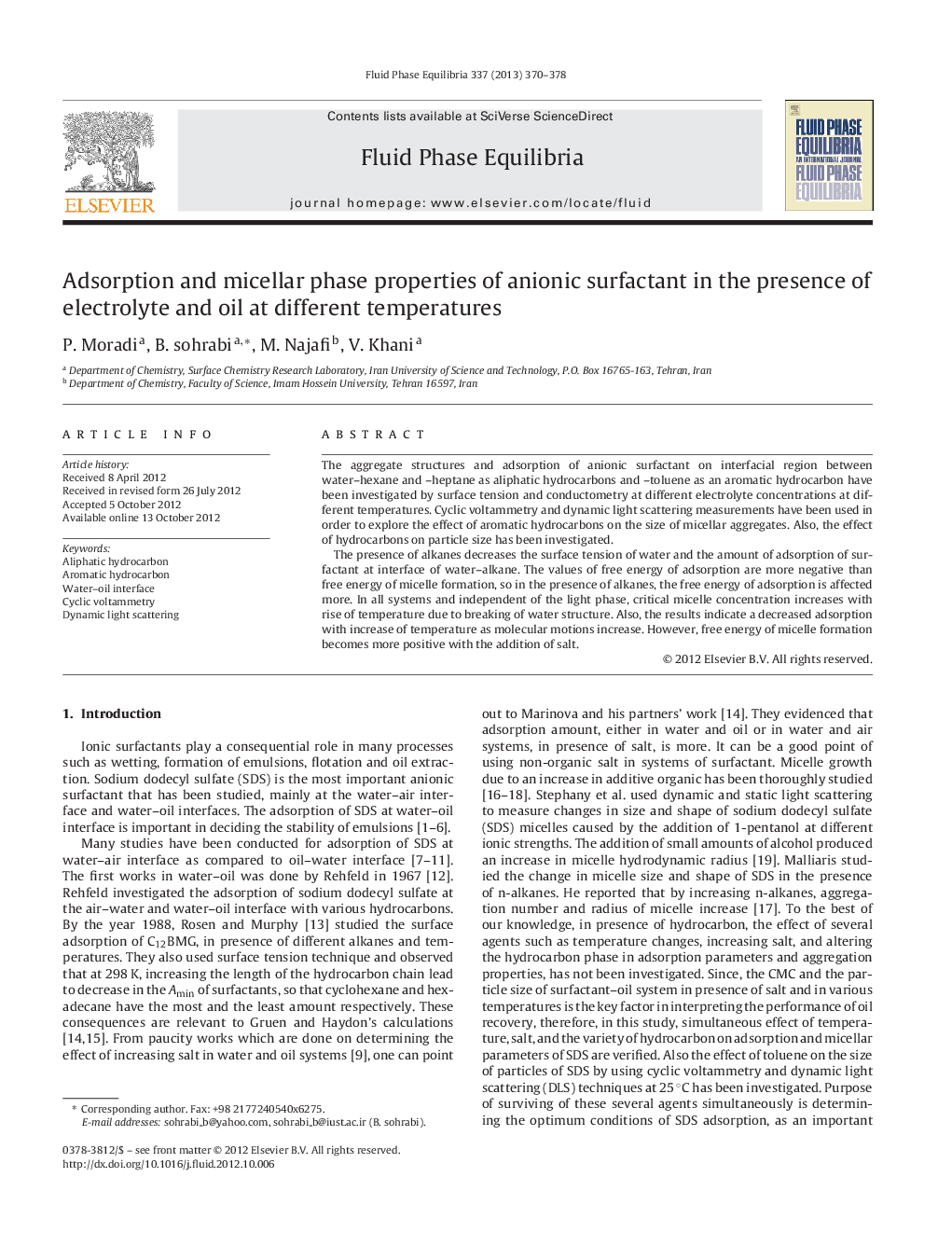| Article ID | Journal | Published Year | Pages | File Type |
|---|---|---|---|---|
| 201625 | Fluid Phase Equilibria | 2013 | 9 Pages |
The aggregate structures and adsorption of anionic surfactant on interfacial region between water–hexane and –heptane as aliphatic hydrocarbons and –toluene as an aromatic hydrocarbon have been investigated by surface tension and conductometry at different electrolyte concentrations at different temperatures. Cyclic voltammetry and dynamic light scattering measurements have been used in order to explore the effect of aromatic hydrocarbons on the size of micellar aggregates. Also, the effect of hydrocarbons on particle size has been investigated.The presence of alkanes decreases the surface tension of water and the amount of adsorption of surfactant at interface of water–alkane. The values of free energy of adsorption are more negative than free energy of micelle formation, so in the presence of alkanes, the free energy of adsorption is affected more. In all systems and independent of the light phase, critical micelle concentration increases with rise of temperature due to breaking of water structure. Also, the results indicate a decreased adsorption with increase of temperature as molecular motions increase. However, free energy of micelle formation becomes more positive with the addition of salt.
Graphical abstractThe growth of SDS micelle due to soluble of toluene in micelle palisade layer.Figure optionsDownload full-size imageDownload as PowerPoint slideHighlights► The aggregate structures and adsorption of anionic surfactant on interfacial region between water and aliphatic hydrocarbon hexane, heptane and aromatic hydrocarbon toluene have been investigated. ► Cyclic voltammetry and dynamic light scattering measurements have been used in order to explore the effect of aromatic hydrocarbon on the size of micellar aggregates. ► Simultaneous effects of temperature, salt, and the variety of hydrocarbon on adsorption and micellar parameters of SDS are verified.
